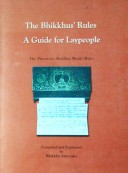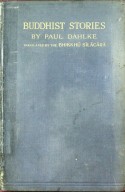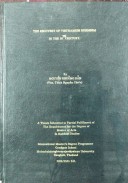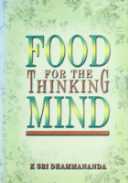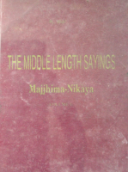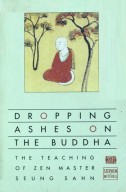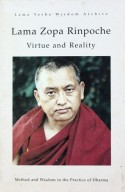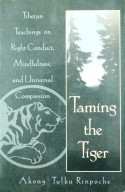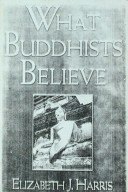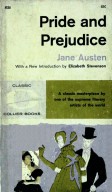Tìm Sách
Sách tiếng Anh-English >> In The Tracks of Buddhism
Thông tin tra cứu
- Tên sách : In The Tracks of Buddhism
- Tác giả : Frithjof Schuon
- Dịch giả : Marco Pallis
- Ngôn ngữ : Anh
- Số trang : 168
- Nhà xuất bản : George Allen & Unwin Ltd
- Năm xuất bản :
- Phân loại : Sách tiếng Anh-English
- MCB : 1210000004799
- OPAC :
- Tóm tắt :
TRANSLATOR’S PREFACE
Those who are already acquainted with Frithjof Schuon’s writings will know that Buddhist themes have frequently figured there, side by side with references to the other great traditions, by way of illustrating the manifold phases of spiritual life both at the theoretical and the ‘operative’ level, as realized by men. The present book marks the first occasion when a whole volume by this author has been specifically allotted to consideration of that form of spirituality which stems from the Buddha; it is the third work of this type to come from his pen, the two others being Language of the Self (Ganesh, Madras 1959) which treats of Hinduism and, more recently, Understanding Islam (Allen and Unwin 1963): it was the success of the latter work which in the first place suggested the idea of a companion volume devoted to Buddhism, one in which the author’s most important Buddhist commentaries would be assembled and edited to form a self-contained whole. In fact, about two thirds of the present work, carefully revised, rearranged and amplified, has come from a collection, published by Flammarion in 1961 and entitled Images de l’Esprit; to this the author has added some entirely fresh material expressly composed for the present book and including its final chapter on the Six Transcendent Virtues (the pãramitãs) wherein the Buddhist wisdom is summed up and through which it may be got to flower in a human life of sanctity; Enlightenment is their fully ripened fruit.
Something may appropriately be said here about the author’s own attitude to Buddhism, as expressed in this and other works: if his illustrations have been largely, though not exclusively, drawn from Mahãyãnist and notably from Japanese sources with which he is especially familiar, this must on no account be read as evidence that he underrates the authority or spiritual spontaneity of the Theravdda – he says quite plainly that, for him, all the schools of traditional Buddhism, across their differences of emphasis and expression and even their occasional conflicts, are Buddhism and nothing else. Each in its own way voices one and the same spiritual principle; indeed their very variety serves to bring out a particular property of the Buddhist genius (one might also have said, of the Indian genius) namely its power to adapt the essential message to the temperamental needs of differing types of men, speaking to all in the kind of language they will best understand, in particular the diffusion of Buddhism among the Yellow races has resulted in a remarkable flowering of schools and doctrines. Buddhism is par excellence the religion of upãyas, provisional means, and these have to be as variable as the beings whose spiritual food they are meant to supply; but all have the same purpose in view, namely an awakening of prajnã, the liberating wisdom transcending all names and forms. In this matter the author gladly takes his stand beside the great Japanese saint Hõnen when he declares, after enumerating the principal schools of his time with their characteristics, that:
‘What they all say is exactly what the Sũtras and Shastras say and corresponds to the golden words of Nyorai (Gautama) himself who, according to men’s varying capacity, taught them at one time one thing and at another another, as circumstances required … If we but attend to our religious practices as the Sũtras teach they will all help us to pass safely over the sea of birth and death to the other shore. If we act according to the Law, we shall attain Enlightenment… The one thing to do is to put the principles into practice, because they all teach the way of deliverance from the dread bondage.’
To turn to a purely practical matter of literary dialectic: the author wishes mention to be made of certain expedients of wording commonly employed in his texts; in order to make apparent the reasons behind their use, it is best to quote his own words, taken from a similar context elsewhere:
‘We regret the very frequent use of capitals as also of inverted commas, but we are compelled to do this, partly because of loose habits, inconsistencies and linguistic misuses on the part of many writers today and partly in order to compensate for the imprecision of a language that has become somewhat outworn, as the case may be. To give one example: if it be conventional to write “the gods” with small letters this is because the gods, put in the plural, are always assumed to be false; but, apart from the fact that some writers go as far as to write “the Saints’ ’ with a capital, one does not see why small letters should be used when referring to “Gods” one believes to be true.’
The reader should find no difficulty in perceiving why one of the above-mentioned expedients has been used in any given case.
One thing that could occasion surprise to some readers is the occurrence, between the covers of this book, of considerable passages the subject-matter of which does not, at first sight, seem to come under a strictly Buddhist label. The reason for these digressions, which are more apparent than real, is because one of the purposes the author constantly has in mind is to relate the traditional teachings to present situations: his dialectic is largely conditioned by this aim. Neither in expounding Buddhism nor the doctrines of any other religion does he set out to provide a text-book, complete with theoretical, historical, ethical and other data systematically arranged and presented. Rather does he handle his subject on free lines, focussing attention on whatever will serve to illustrate the point of the moment; his treatment of the subject in question has something of the character of a series of discontinuous (though invisibly connected) tableaux; the form of the title chosen for this book is in keeping with such a technique. This method moreover is not alien to the spirit of Buddhism, whose teachings are also able to become a touchstone of discernment in regard to many contemporary beliefs and assumptions examined in these pages – a mirror in which they may be viewed and there caused to display their true colours. The Buddhist wisdom, like the Christian or Hindu or Islamic wisdom moreover, provides all the necessary criteria for this purpose, so that the apparent digressions will explain themselves in the light of what has just been said.
The foregoing considerations now bring US up against another question, not foreign to the writing of this book, one that concerns the Buddhist world in a rather peculiar way: the reproach (intended as a compliment!) has been imputed to Buddhism by more than one present day propagandist on its behalf that its teachings and those of modem empirical science, especially in the psychological and sociological fields, are perfectly reconcilable; one has even heard it said that the Buddha’s teachings and those of Marxism are not incompatible (such is evidently not the opinion of the Chinese Marxists, however). The motives behind this kind of statement are apparent enough: partly there is the wish to make Buddhism sound acceptable in modern ears in opposition to Christianity or the other ‘theistic’ religions: and partly – this applies especially to Orientals who, thanks to a Westernised education, are no longer quite sure where they belong – by the wish to appear in line with ‘twentieth century thinking’ at all costs. The only remedy for this state of mind with its accompanying susceptibility to every kind of subversive suggestion is to cultivate deliberately (‘mindfully’ in the Buddhist sense) a habit of rigorous discrimination extending both to the intellectual sphere in all its departments and even to the day-to-day sphere of personal behaviour. Some of the detailed discussions in the pages to follow are well calculated to foster this kind of habitual vigilance.
Part II of this book calls for a few special remarks inasmuch as it treats of the ideas and symbolism and also of the mythology of Shintõ, the native tradition that preceded Buddhism in Japan and has continued to exert an influence in conjunction with the latter down to our time: the outcome of this association is the Japanese civilization in all its originality and beauty. No one who reads this book will fail to notice how dear to the heart of the author that civilization is; he himself mentions an episode of his boyhood when the seed of that love first implanted itself in his breast. As was said before, however, this strong sympathy for one form of Buddhism and for the people who are attached to that form has never operated, with the author, to the detriment of other traditional forms of like validity.
Very few Europeans have much idea of what Shintõ is about; in fact many people in the West feel a certain prejudice against it inasmuch as its ethical prescriptions, especially those relating to chivalry and honour, were shamelessly exploited in the period that followed the Meiji revolution by those whose interest it was to turn the Japanese sense of loyalty into an instrument of a modern (therefore essentially Western and profane) nationalism; the disasters of our time proceed from there. To correct this false impression, a just exposition of what Shinto really stands for was much needed; it is therefore not unfitting that a book about that Buddhism which, for Shinto, provided its historical and metaphysical complement should now also serve as a setting for this task of redress.
In conclusion, fitting acknowledgement should be made for the skilled assistance offered by three of the translator’s friends, Mrs M. H. Robins, Richard Nicholson and William Stoddart, who either helped with putting certain chapters into English or with the exacting work of correcting the translated text and clearing up doubtful points of various kinds; thanks to them, the work of preparing this volume was rendered that much lighter.
MARCO PALLIS
CONTENTS
Translator’s Preface page 7
PART I IN THE TRACKS OF BUDDHISM
I Originality of Buddhism………………17
II Message and Messenger………………24
III Charity and Existence………………29
IV The Question of Illusion………………34
V A Buddhist Eye on Science………………39
VI Cosmological and Eschatological Viewpoints………………46
VII More About Human Destinies – the Function of Mercy………………52
VIII What is Matter and who is Mãra? ………………57
IX Some fallacies and facts concerning Buddhism………………65
X Glimpses into Zen………………………..70
PART II BUDDHISM’S ALLY IN JAPAN SHINTO OR THE WAY OF THE GODS
XI Science, Myth and the Meaning of Ancestors………………81
XII Ethics and Mythology of Shinto ………………90
XIII The Noble Virtues: Some Lessons of Shinto………………107
PART III VISTAS OF THE MAHAYANA
XIV Treasures of Buddhism………………117
XV Mystery of the Bodhisattva………………128
XVI The Feminine Element in Mahãyãna………………146
XVII Synthesis of the Pãramỉtãs………………152
Index………………164
 Facebook
Facebook
 Google
Google
 Google+
Google+

